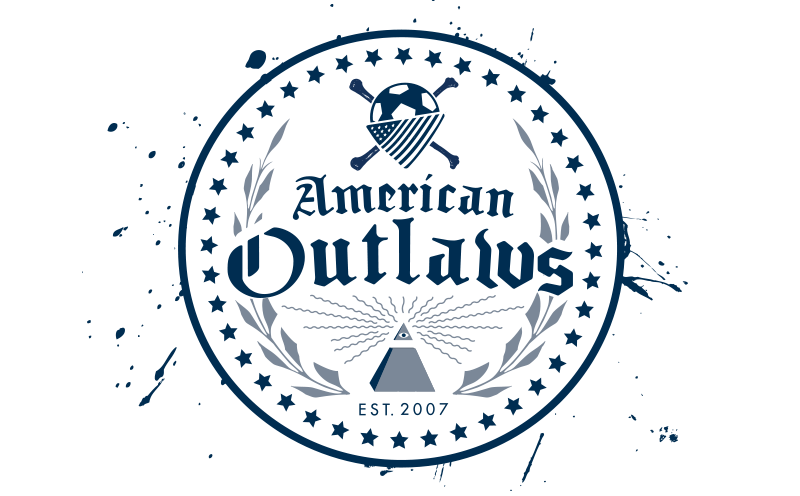CELEBRATING THE WOMEN OF AO: MARY ANNE WELLS, WAREHOUSE OPS MANAGER
Pictured above: Mary Anne Wells meets the legendary Kristine Lilly at the AO Rally in Austin.
This March, we’re honoring the incredible women who keep AO running – in the stands, in our chapters, and behind the scenes.
These days, Mary Anne coordinates shipping of AO member kits and other merch from AO headquarters, also known as “the Warehouse.” Her love of soccer began long before AO – or even as the coach for her three children’s YMCA teams…
Let’s start at the beginning – how did you get into soccer in the first place?
I was on my high school track team and ran the 50- and 100-yard dash, relays and hurdles. In the early 1970s, women rarely played team sports, though a lot wanted to. Title IX gave us that opportunity.
In my sophomore year at the University of Illinois at Urbana-Champaign, several women in my dorm and a few friends decided to start a team. I wanted to play soccer because I loved to run; not distance, but sprints. I liked that the game was fast-paced, and it required you to be aware of the movement on and off the ball.
What was playing soccer like back in those days?
The first thing we had to do was find cleats – only one soccer cleat was available in town, and it was an Adidas men’s shoe – Copa Mundial, I think? We had to order pairs through the store. The team paid for those with our own money, as well as uniforms, travel expenses and entry fees. To raise funds, we sold donuts and later caramel apples on the quad.

Mary Anne Wells, right, and her sister Pat play for the University of Illinois club team in 1977.
That first year (1976-1977), only three other Big 10 schools had women’s soccer clubs – Purdue, Ohio State and Minnesota – so we filled our schedule with club or YMCA teams from St. Louis, Chicago and Springfield, Illinois. The U of I had fields and goals, but the turf was terrible, and the penalty areas would fill with water when it rained.
In 1978, we got to play in the Big 10 Invitation in Chicago with four other teams; we took the 2nd place trophy. Half the team stayed at my parents’ house in Elgin; the other half stayed with another player’s family in nearby Hampshire. At this point, my two younger sister had joined the team, and my parents were thrilled we played for the school – the U of I is my dad’s alma mater.
It’d be nearly 20 years before the U of I started its NCAA women’s soccer team.

A columnist for The Daily Illini discusses the newly created U. of Illinois women's soccer club.
Your involvement with soccer didn’t end at graduation, though. What did the next few years bring?
My first time coaching was in 1978 when I moved to Lincoln, Nebraska. I coached a YMCA first-grade team – 15 boys and one girl. We only scored one goal that season – and it was by the girl, Lisa. Sixteen years later, I played against Lisa in a co-rec adult indoor league game.
As for my own kids, I wanted them to try several sports and find one they liked, although I secretly hoped it’d be soccer. It turned out, they all did – their friends played, and I think they liked having their mom coach them (at least when they were younger). I enjoyed coaching them at that age because I could teach them the basics of the game, but also how to be a team player and to have fun.
In 1998, a new girls soccer club, Sparta, was founded in Lincoln. This was an opportunity to promote girls soccer and coach competitive teams. The club also brought in UNL women’s soccer players to coach and assist our teams, and they were great role models.
What was it like being one of the few parents in those days who had played the game herself?
Those first few years were difficult because not many parents – or kids, for that matter – understood the game. There were a few games when the opposing coaches assumed I was just a parent helping out, because there were very few women coaches. It became easier every year as more parents came to understand the game. Coaching for Sparta was extremely rewarding because the players wanted to concentrate on soccer and loved to compete.
How do you feel about the evolution of women’s soccer since your early playing days?
I took my family to the 1999 Women’s World Cup games in Chicago and was thrilled to see Soldier Field filled with fans, even if most of them were from other countries. Even since then, it’s grown so much. The U.S. may still be the best in the world, but it’s great to see other countries’ programs grow, too. The competition will only get better.
What role do you think AO has played in that evolution?
AO brings fans together and make them feel like they’re part of the soccer family. I went to a WNT game with AO in St. Louis and saw for myself the packed stadium – a lot of which was the AO section. It’s amazing to see how many fans there are now.
Overall, what has soccer meant to you?
Playing, coaching and now with AO, it’s been a part of my life for a long time. I was able to earn a U.S. Soccer E License for coaching in 1996. I’ve met a lot of my friends through soccer, and I still keep in touch with college teammates, parents and former players.
I bought my 1-year-old granddaughter a soccer ball for Easter. The next time I see her, I’m going to get her started.
March 29, 2021

